Joe Simon - Moon Walk Part II

Moon Walk Part II
PART THREE
The Sound Stage 7 saga kind of rises and sets with its biggest star, Joe Simon.
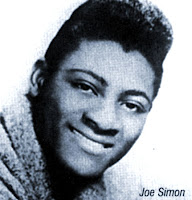 As we've mentioned before, it was John R who suggested to Vee-Jay that they take Joe down to Rick Hall in Muscle Shoals, resulting in his first national chart hit, Let's Do It Over, which would hit #13 R&B in mid 1965. When Vee-Jay went belly up later that year, John made sure that Sound Stage 7 picked up Simon's contract. With Allen Orange and Bob Wilson now on board, his J.R. Enterprises was ready. One of the first sessions that Wilson was involved in was Simon's Teenager's Prayer, which climbed to #11 R&B in the summer of 1966.
As we've mentioned before, it was John R who suggested to Vee-Jay that they take Joe down to Rick Hall in Muscle Shoals, resulting in his first national chart hit, Let's Do It Over, which would hit #13 R&B in mid 1965. When Vee-Jay went belly up later that year, John made sure that Sound Stage 7 picked up Simon's contract. With Allen Orange and Bob Wilson now on board, his J.R. Enterprises was ready. One of the first sessions that Wilson was involved in was Simon's Teenager's Prayer, which climbed to #11 R&B in the summer of 1966.As we talked about last week, J.R. Enterprises was using Cliff Parman as their arranger and conductor at this point, an old-school Nashville Guy, who believed in recording everything 'live' (including the horns and strings) in the studio. That approach, coupled with the fact that John R had assembled most of Fame's original rhythm section in Norbert Putnam, Jerry Carrigan, and David Briggs, to work with Wilson and Orange produced some great records, and kept Simon in the top twenty with the follow-up My Special Prayer. Originally using the parent label's Monument Studio in Nashville, they switched over to the better equipped Bradley's Barn in late 1966.
 I've heard it said that they were too much alike, but for whatever reason, the strong-willed Parman and John R had a big blowout at this point, and Cliff walked away. As we've discussed, Nashville's studios were union operations, that looked down their nose at the 'head arrangements' of the 'house bands' in places like Memphis and Muscle Shoals. This closed environment made it difficult to cut anything other than the established status quo defined by guys like The A Team. Once Parman left, Allen Orange talked Richbourg into letting him bring in the King Casuals, the North Nashville R&B stalwarts that had made a name for themselves in the clubs on Jefferson Street, before going on to power legendary local TV shows Night Train and The!!!!Beat. Although Jimi Hendrix had moved on by then, the band still featured Billy Cox, Johnny Jones, Freeman Brown, Harrison Calloway and tenor man Aaron Varnell, who became the label's new arranger. Since the Casuals never did carry a keyboard player, Bob Wilson was a perfect fit. This arrangement would record some of the label's coolest records in late 1966 and early 1967, with artists like Roscoe Shelton, Sam Baker, and Lattimore Brown.
I've heard it said that they were too much alike, but for whatever reason, the strong-willed Parman and John R had a big blowout at this point, and Cliff walked away. As we've discussed, Nashville's studios were union operations, that looked down their nose at the 'head arrangements' of the 'house bands' in places like Memphis and Muscle Shoals. This closed environment made it difficult to cut anything other than the established status quo defined by guys like The A Team. Once Parman left, Allen Orange talked Richbourg into letting him bring in the King Casuals, the North Nashville R&B stalwarts that had made a name for themselves in the clubs on Jefferson Street, before going on to power legendary local TV shows Night Train and The!!!!Beat. Although Jimi Hendrix had moved on by then, the band still featured Billy Cox, Johnny Jones, Freeman Brown, Harrison Calloway and tenor man Aaron Varnell, who became the label's new arranger. Since the Casuals never did carry a keyboard player, Bob Wilson was a perfect fit. This arrangement would record some of the label's coolest records in late 1966 and early 1967, with artists like Roscoe Shelton, Sam Baker, and Lattimore Brown. John R, meanwhile, decided to bring Wilson, Orange, and Joe Simon down to Fame in Muscle Shoals around this time for a multi-day session that produced the funky Come On And Get It as well as a sweet version of the Penn-Oldham nugget In The Same Old Way. Convinced that this was the right direction to take, Richbourg's next stop was Memphis, where he would pair up with Chips Moman and record the rest of Joe's album No Sad Songs at his American Studio. Still looking out for his own, John made sure that Wilson and Orange continued to get paid, both through additional overdubs made back in Nashville, and by issuing material they had written as the B sides of Simon's singles.
John R, meanwhile, decided to bring Wilson, Orange, and Joe Simon down to Fame in Muscle Shoals around this time for a multi-day session that produced the funky Come On And Get It as well as a sweet version of the Penn-Oldham nugget In The Same Old Way. Convinced that this was the right direction to take, Richbourg's next stop was Memphis, where he would pair up with Chips Moman and record the rest of Joe's album No Sad Songs at his American Studio. Still looking out for his own, John made sure that Wilson and Orange continued to get paid, both through additional overdubs made back in Nashville, and by issuing material they had written as the B sides of Simon's singles. Shortly after this, John R announced that he had signed an agreement with Moman and that, from then on, he was going to do his recording at American. There during the studio's absolute prime, great records by folks like Roscoe Robinson and Ella Washington (among many others) were waxed in Memphis around the same time that Tom Dowd and Atlantic were recording everybody down there as well. If nothing else, John R lived up to his reputation of knowing good music when he heard it.
Shortly after this, John R announced that he had signed an agreement with Moman and that, from then on, he was going to do his recording at American. There during the studio's absolute prime, great records by folks like Roscoe Robinson and Ella Washington (among many others) were waxed in Memphis around the same time that Tom Dowd and Atlantic were recording everybody down there as well. If nothing else, John R lived up to his reputation of knowing good music when he heard it.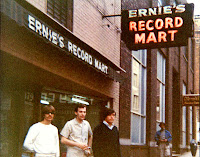 Bob Wilson, meanwhile, was making a name for himself around Nashville as a 'go-to' session man, working whenever and wherever he could. Monthly appearances on the Grand Ol' Opry with Earl Scruggs helped give him some name recognition with the Country crowd, and before long he found himself working with legendary Columbia producer Bob Johnston, playing piano behind the likes of George Jones. He also began a life-long friendship with a New Orleans drummer named Karl Himmel, and began using both him and Billy Cox on sessions whenever he could.
Bob Wilson, meanwhile, was making a name for himself around Nashville as a 'go-to' session man, working whenever and wherever he could. Monthly appearances on the Grand Ol' Opry with Earl Scruggs helped give him some name recognition with the Country crowd, and before long he found himself working with legendary Columbia producer Bob Johnston, playing piano behind the likes of George Jones. He also began a life-long friendship with a New Orleans drummer named Karl Himmel, and began using both him and Billy Cox on sessions whenever he could.  Burned out on the drive to Memphis, and fed up with Chips Moman who, he thought, put more effort into the songs he owned the publishing on than the songs owned by Richbourg's Cape Ann Music, John R began to rethink things. Why couldn't he set up the same kind of 'house band' situation right there in Nashville? With Wilson away visiting family in Detroit, he brought Joe Simon in to a studio on 'Music Row' called Music City that was owned by Scotty Moore, Elvis' first guitar player. With Wayne Moss on the bass, they laid down the basic tracks for what they just knew would be a monster hit. As soon as Wilson got back, Allen Orange brought him in and had him overdub the keyboards (with John R agreeing to back the single with their composition Come On And Get It as the B side once again) to make sure they didn't miss out. A cover of a Harlan Howard song that Waylon Jennings took to the Country top ten in 1967, The Chokin' Kind was indeed a monster, spending three weeks at #1 R&B in early 1969. It was the biggest hit the label (or Joe Simon for that matter) had ever had, and convinced Richbourg he could make it work 'in house' in Nashville.
Burned out on the drive to Memphis, and fed up with Chips Moman who, he thought, put more effort into the songs he owned the publishing on than the songs owned by Richbourg's Cape Ann Music, John R began to rethink things. Why couldn't he set up the same kind of 'house band' situation right there in Nashville? With Wilson away visiting family in Detroit, he brought Joe Simon in to a studio on 'Music Row' called Music City that was owned by Scotty Moore, Elvis' first guitar player. With Wayne Moss on the bass, they laid down the basic tracks for what they just knew would be a monster hit. As soon as Wilson got back, Allen Orange brought him in and had him overdub the keyboards (with John R agreeing to back the single with their composition Come On And Get It as the B side once again) to make sure they didn't miss out. A cover of a Harlan Howard song that Waylon Jennings took to the Country top ten in 1967, The Chokin' Kind was indeed a monster, spending three weeks at #1 R&B in early 1969. It was the biggest hit the label (or Joe Simon for that matter) had ever had, and convinced Richbourg he could make it work 'in house' in Nashville. Bergen White, who arranged The Chokin' Kind, had begun writing horn charts for the label while they were still using American. With him on board, J.R. Enterprises set about creating their very own house rhythm section Richbourg would dub 'The Music City Four' (or, when they were joined by Troy Seals on second guitar, 'The Music City Four + 1'). John R was very much into the concept, and made sure the labels said things like 'recorded in Nashville', and credited both White and the 'Music City Group' as the arrangers.
Bergen White, who arranged The Chokin' Kind, had begun writing horn charts for the label while they were still using American. With him on board, J.R. Enterprises set about creating their very own house rhythm section Richbourg would dub 'The Music City Four' (or, when they were joined by Troy Seals on second guitar, 'The Music City Four + 1'). John R was very much into the concept, and made sure the labels said things like 'recorded in Nashville', and credited both White and the 'Music City Group' as the arrangers.This awesome, incredible B side we have here today represents this under-rated rhythm section just cooking along on all burners.
 In addition to Bob Wilson, the group included Tim Drummond (pictured with Wilson at right) on Bass. Drummond had come up through James Brown's outfit, most notably holding down the fat bottom on Licking Stick-Licking Stick in 1968. A multi-talented guy, he would end up (like Wilson) producing for the label, as well as writing the great horn arrangement we have here on Moon Walk in early 1970.
In addition to Bob Wilson, the group included Tim Drummond (pictured with Wilson at right) on Bass. Drummond had come up through James Brown's outfit, most notably holding down the fat bottom on Licking Stick-Licking Stick in 1968. A multi-talented guy, he would end up (like Wilson) producing for the label, as well as writing the great horn arrangement we have here on Moon Walk in early 1970. That unbelievable guitar on here is being played by Mac Gayden, the self-proclaimed inventor of the 'slide-wah' style. A very cool guy, he came up through the ranks in Nashville, playing behind legend Arthur Gunter, and working at Ernie's Record Mart as a teenager. He would co-write the hit Everlasting Love with Buzz Cason for Robert Knight in 1967. A Nashville session veteran, he'd been around the block a couple of times, reportedly playing on Dylan's Blonde On Blonde.
That unbelievable guitar on here is being played by Mac Gayden, the self-proclaimed inventor of the 'slide-wah' style. A very cool guy, he came up through the ranks in Nashville, playing behind legend Arthur Gunter, and working at Ernie's Record Mart as a teenager. He would co-write the hit Everlasting Love with Buzz Cason for Robert Knight in 1967. A Nashville session veteran, he'd been around the block a couple of times, reportedly playing on Dylan's Blonde On Blonde.  Kenny Buttrey was, without a doubt, the greatest drummer in Nashville. He had started out with Charlie McCoy and The Escorts, the band that, at one time or another, had also been home to Gayden and Wayne Moss. He was one of the most sought after session musicians on 'music row', and it was to Sound Stage 7's credit that he became 'their' drummer. He had been on Blonde On Blonde as well and, along with McCoy and pedal steel guitar wizard Pete Drake, he had backed up Dylan on John Wesley Harding in 1967.
Kenny Buttrey was, without a doubt, the greatest drummer in Nashville. He had started out with Charlie McCoy and The Escorts, the band that, at one time or another, had also been home to Gayden and Wayne Moss. He was one of the most sought after session musicians on 'music row', and it was to Sound Stage 7's credit that he became 'their' drummer. He had been on Blonde On Blonde as well and, along with McCoy and pedal steel guitar wizard Pete Drake, he had backed up Dylan on John Wesley Harding in 1967. The cool thing about these guys, in my opinion, is that in addition to cranking out great R&B for Sound Stage 7, they played on all kinds of records, from Peggy Scott & Jo Jo Benson's Soul Shake to mainstream country acts like Dolly Parton to Neil Young and J.J. Cale. When Dylan returned to Nashville in 1969 to record Nashville Skyline, Bob Wilson was asked to be the keyboard player. He would appear on Self Portrait the following year as well. Just like John R had promised him, the sky did indeed appear to be the limit.
The cool thing about these guys, in my opinion, is that in addition to cranking out great R&B for Sound Stage 7, they played on all kinds of records, from Peggy Scott & Jo Jo Benson's Soul Shake to mainstream country acts like Dolly Parton to Neil Young and J.J. Cale. When Dylan returned to Nashville in 1969 to record Nashville Skyline, Bob Wilson was asked to be the keyboard player. He would appear on Self Portrait the following year as well. Just like John R had promised him, the sky did indeed appear to be the limit.(continued in PART FOUR)

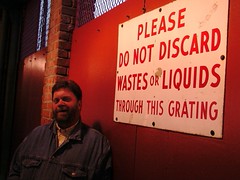





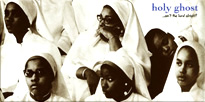
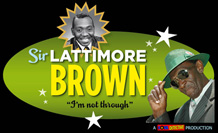






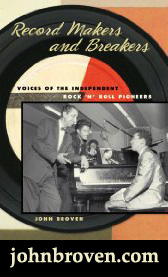


5 Comments:
Just found your wonderful blog...
(I was googling Otis Clay)
I will have to have a longer look at all this when I've got a bit longer. It really IS a nice blog! Can't believe I've not stumbled over it before.
This is indeed a really good one. I've yet to stumble across a bad record on this label. We're there any?
I'm right there with that, Todd. The legacy of great music on Sound Stage 7 is, as I've said before, a testimony to John Richbourg's unerring sense of what made a good record, coupled with the fact that he surrounded himself with incredibly talented people...
We'll be listening to a lot more Sound Stage 7 45s over on soul detective as we unravel the story of John R's staff songwriter, Allen orange. Stay tuned.
My unlce is Bob Wilson
Cool!
Post a Comment
<< Home